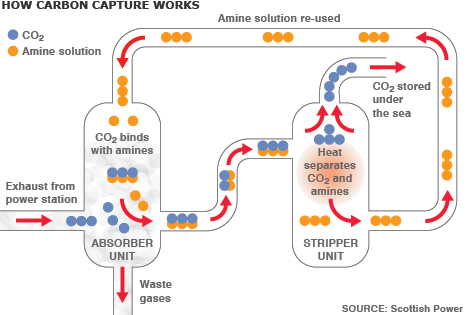Capturing Carbon

A recent CRS report provides a wealth of information about carbon capture. You can learn a lot about the various technologies and how close or far they are from possible adoption. But for most of us, the technical details matter less than the answers to some key questions: Is carbon capture technically feasible? Can it be done at scale? At what cost?
There’s no question that carbon capture is technically feasible. There are a number of well-understood methodologies, such as amine-capture processes (first patented 80 years ago). Other technologies have also been used in pilot projects. Some carbon capture is done commercially — and there are actually three natural gas treatment plants and one coal-fired plant that sequester some of their carbon deep underground.
But can it be done at scale? There still aren’t any full-scale demonstration plants. The cost of capturing full gas stream of a modern power plant would be around $1 billion. There are nine projects in various of the world in the planning stage, but nothing yet under construction. Until this is done, we won’t be ready to move forward to widespread use.
The key question: what are the economics? Here are three most important points. First, based on experience with other pollution control technologies, the cost of using existing capture technologies will probably decline by up to 50% over time as the industry goes up the learning curve. Second, new technologies will have a hard time competing, partly due to this cost decline for existing technologies and partly because the new technologies always look cheaper in the lab than they turn out to be in practice. Third, carbon capture becomes a winning economic proposition for new coal plants if the price of carbon is over $70/ton, but for new natural gas plants at only around $35 per ton. Those numbers are very much in the range of current government estimates.
Reader Comments
One Reply to “Capturing Carbon”
Comments are closed.






Dan,
Carbon capture technology has zero return-on-investment for mitigating climate change. All the carbon capture in the world would have no demonstrable, measurable effect on reducing the global atmospheric temperature. This is the core scientific reason why there is very little support for carbon capture technology. Carbon capture is a gross waste and mismanagement of financial resources. Outside of California there is declining alarm regarding climate change. Fraudulent carbon dioxide mitigation schemes, carbon taxes and trading, and other such gimmicks are the reason for this decline. Reason prevails.